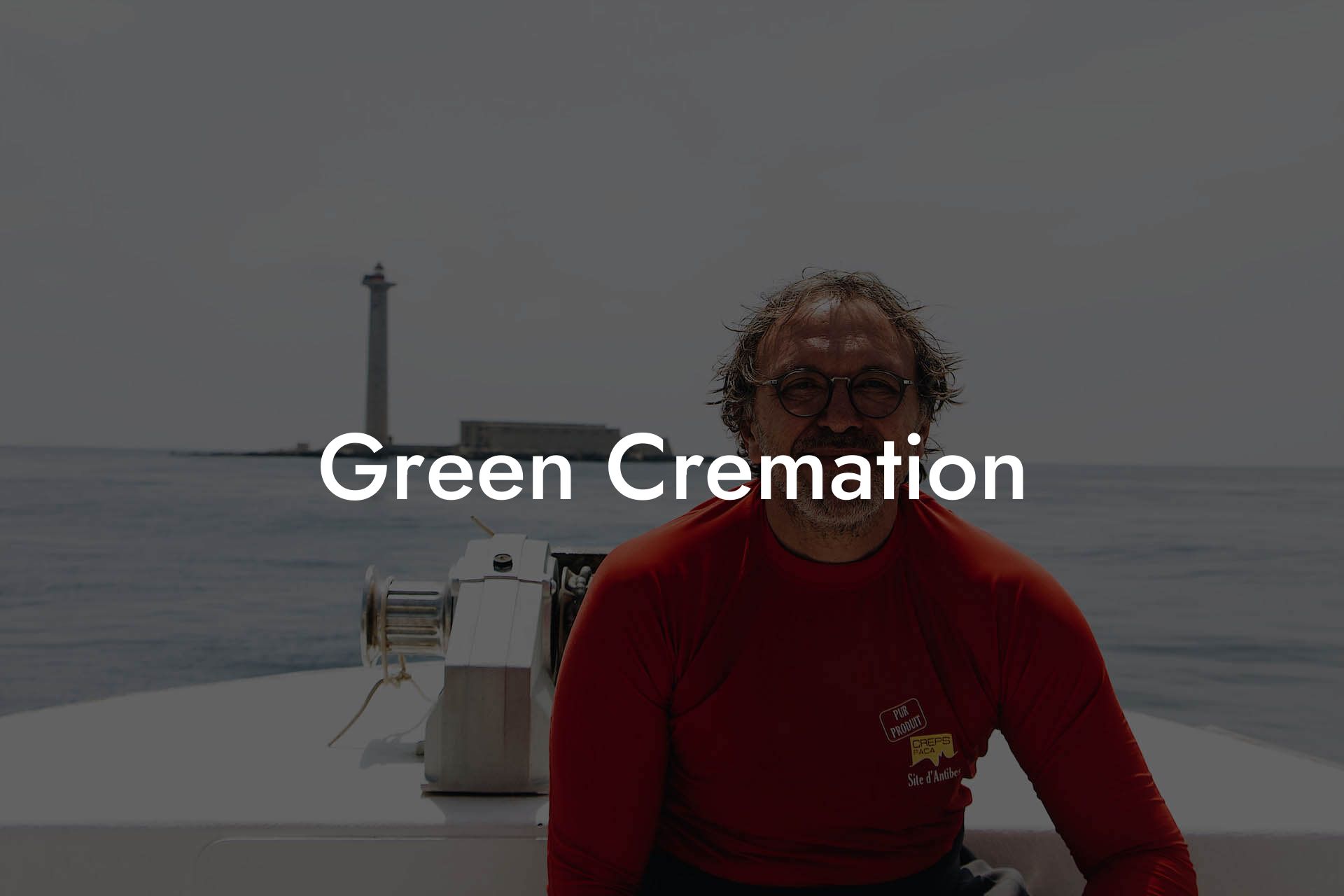Imagine a world where death care is not only environmentally conscious but also celebrates the beauty of life. Welcome to the world of green cremation, a revolutionary approach that's changing the way we think about the end of life. This comprehensive guide will take you on a journey to explore the what, why, and how of eco-friendly cremation, empowering you to make informed choices that align with your values and the planet's well-being.
We know how hard that can feel. You are sorting through precious memories, searching for the right words, and trying to hold it together when it is time to speak. It is a lot to carry.
That is why we created a simple step by step eulogy writing guide. It gently walks you through what to include, how to shape your thoughts, and how to feel more prepared when the moment comes. → Find Out More
Quick Links to Useful Sections
What is Green Cremation?
Green cremation, also known as alkaline hydrolysis or water cremation, is a modern, eco-friendly alternative to traditional flame-based cremation. This innovative process uses a water-based solution to break down the body, reducing the environmental impact of traditional cremation methods.
In a green cremation process, the body is placed in a specialized vessel and submerged in a gentle, alkaline solution. This solution accelerates the natural decomposition process, leaving only bone fragments and a sterile liquid residue. The resulting ashes are returned to the family, just like in traditional cremation.
The Environmental Impact of Traditional Cremation
Traditional cremation methods have a significant environmental footprint. The cremation process releases greenhouse gases, particulate matter, and toxic chemicals into the atmosphere, contributing to air pollution and climate change.
- Greenhouse Gas Emissions: Cremation releases carbon dioxide, methane, and other greenhouse gases, accelerating global warming.
- Air Pollution: Cremation emits particulate matter, volatile organic compounds, and heavy metals, compromising air quality and public health.
- Resource Consumption: Traditional cremation requires large amounts of energy, typically generated by fossil fuels, which exacerbates climate change.
In contrast, green cremation offers a more sustainable solution, reducing the environmental impact of death care while still providing a meaningful way to honor loved ones.
Benefits of Green Cremation
Green cremation offers numerous benefits, not only for the environment but also for families and individuals seeking a more sustainable, gentle, and respectful way to say goodbye.
- Environmentally Friendly: Green cremation reduces greenhouse gas emissions, air pollution, and resource consumption, making it a more eco-friendly option.
- Gentle and Respectful: The water-based process is a more gentle and respectful way to handle the body, reducing the risk of damage or desecration.
- Lower Carbon Footprint: Green cremation requires significantly less energy than traditional cremation, resulting in a lower carbon footprint.
- Increased Flexibility: Green cremation can be performed at a lower temperature, allowing for more flexibility in the cremation process and reducing the risk of mercury emissions.
How Does Green Cremation Work?
The green cremation process involves several steps, ensuring a dignified and eco-friendly farewell for your loved one.
- Preparation: The body is prepared for the green cremation process, which may include washing, dressing, and cosmetic restoration.
- Placement: The body is placed in a specialized vessel designed for alkaline hydrolysis.
- Alkaline Hydrolysis: The vessel is filled with a gentle, alkaline solution that breaks down the body's tissues.
- Residue Collection: The resulting bone fragments and sterile liquid residue are collected and processed.
- Return of Ashes: The ashes are returned to the family, ready for memorialization or scattering.
Is Green Cremation Right for You?
Green cremation is an attractive option for those who value the environment, seek a gentle and respectful farewell, and desire a more sustainable death care practice.
Consider the following questions to determine if green cremation is right for you or your loved one:
- Do you prioritize environmental sustainability and eco-friendliness?
- Are you looking for a more gentle and respectful way to handle the body?
- Do you want to reduce your carbon footprint and contribute to a more sustainable future?
If you answered "yes" to any of these questions, green cremation might be the perfect choice for you.
Resources and Community Support: Your Next Steps
Embracing green cremation is a bold step toward a more sustainable future. To support you on this journey, we've curated a list of resources and community connections to help you navigate the process.
- Green Cremation Providers: Find certified green cremation providers in your area.
- Eco-Friendly Funeral Homes: Discover funeral homes that offer green cremation services and environmentally conscious practices.
- Sustainable Death Care Communities: Join online forums and social media groups focused on sustainable death care and green cremation.
Remember, you're not alone in this journey. Connect with like-minded individuals, explore resources, and take the first step toward a more sustainable, eco-friendly farewell.
Frequently Asked Questions: Green Cremation
Here are some frequently asked questions about green cremation, providing you with a deeper understanding of this innovative process.
1. Is green cremation legal?
Yes, green cremation is legal in many states and countries, although regulations may vary.
2. How long does the green cremation process take?
The process typically takes 2-4 hours, depending on the individual's body composition and the specific technology used.
3. Is green cremation more expensive than traditional cremation?
Green cremation costs are comparable to traditional cremation, and in some cases, may be more affordable.
4. Can I still have a funeral or memorial service with green cremation?
Absolutely! You can still hold a funeral or memorial service, and many funeral homes offer green cremation as an option.

